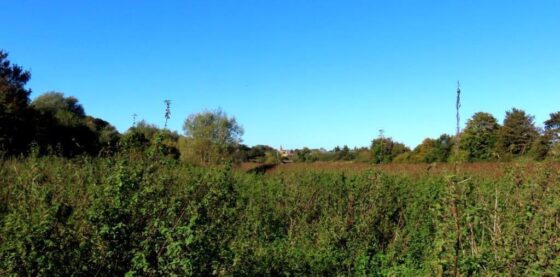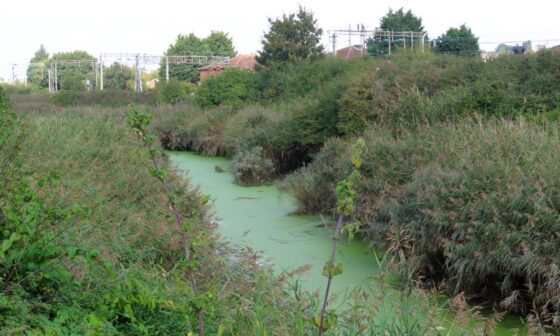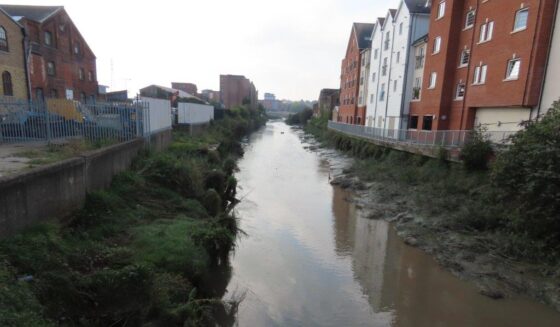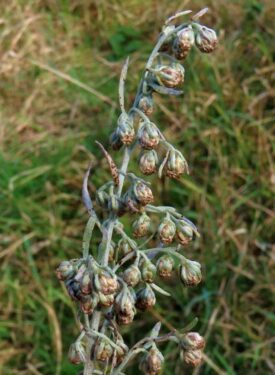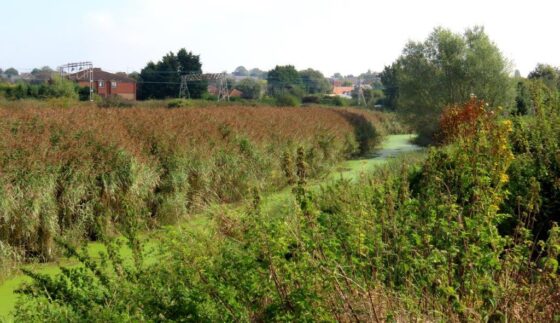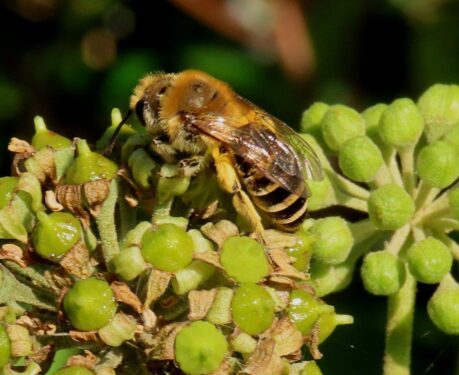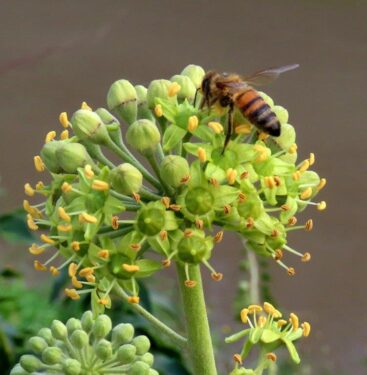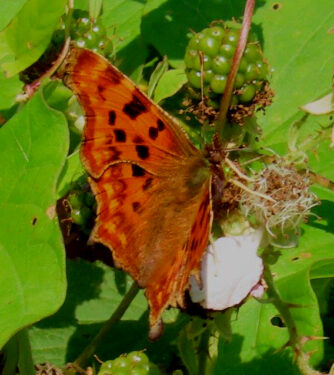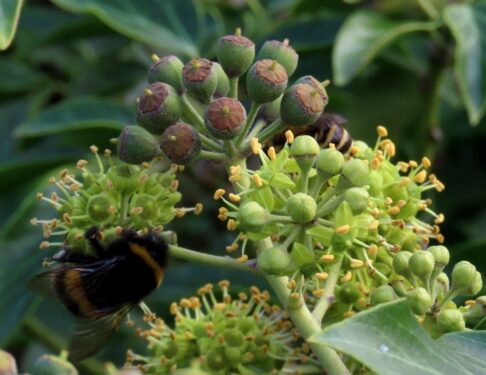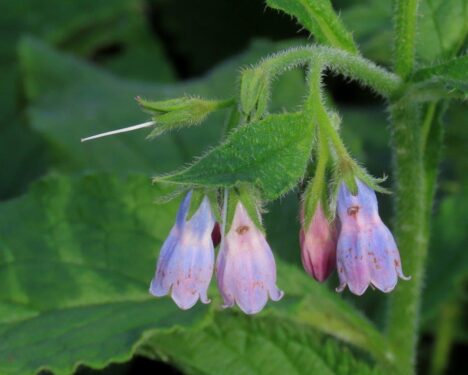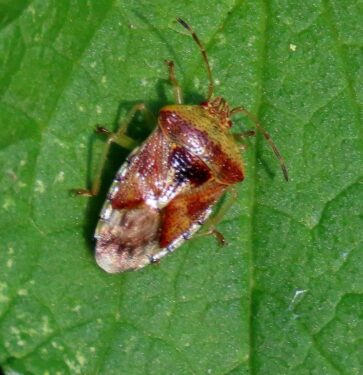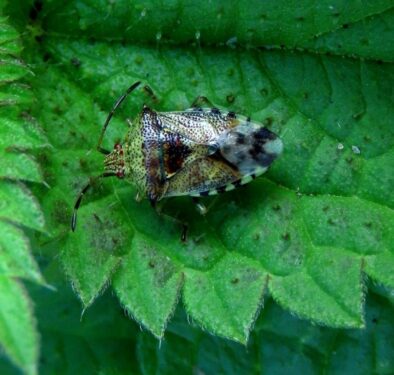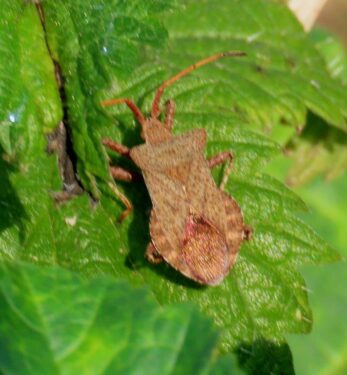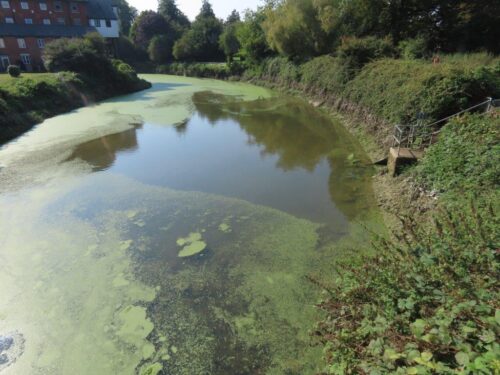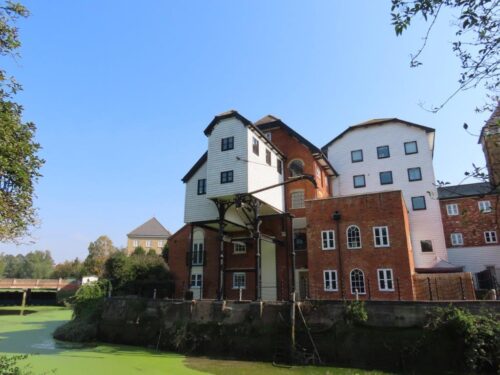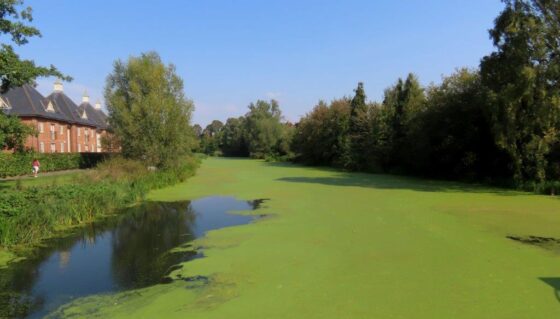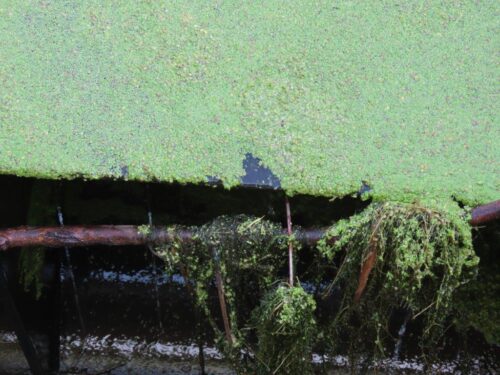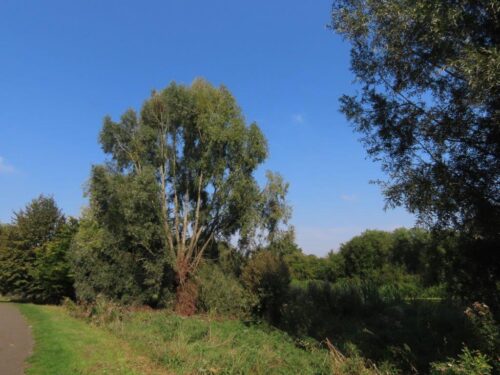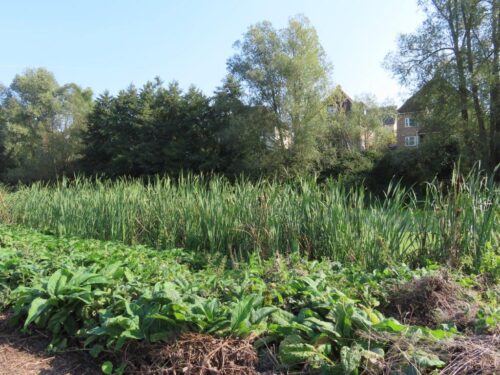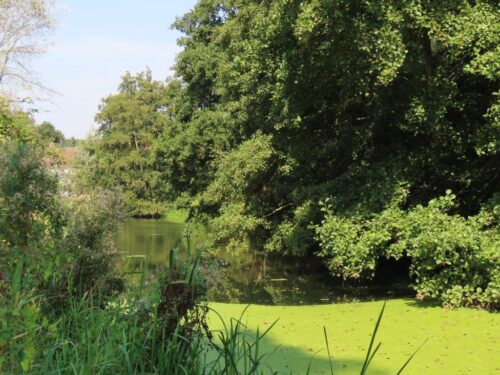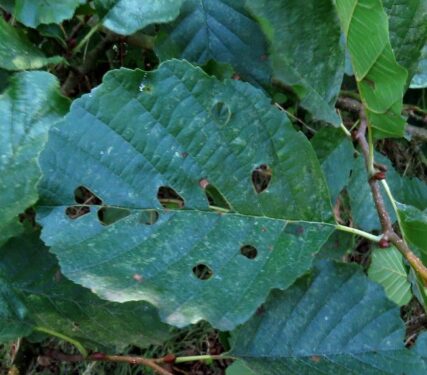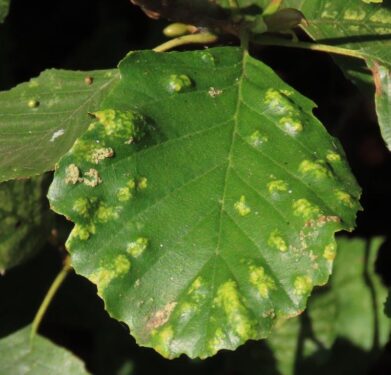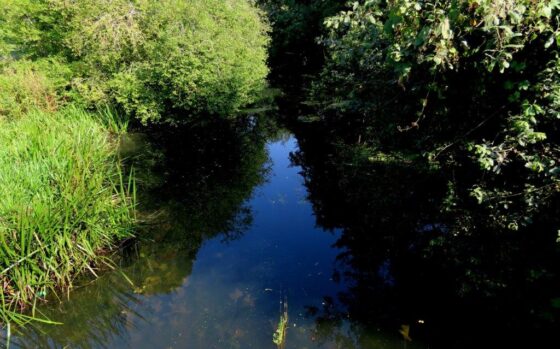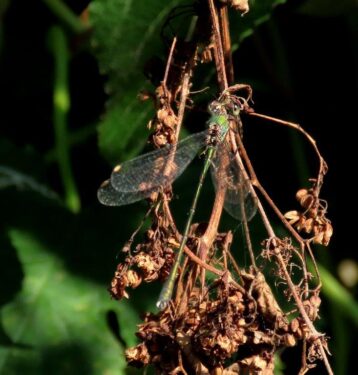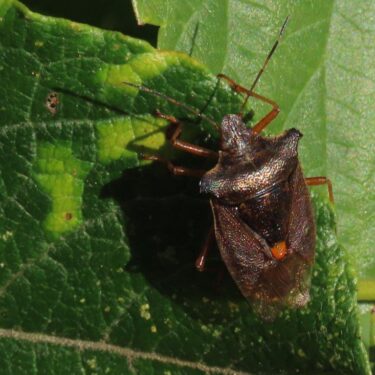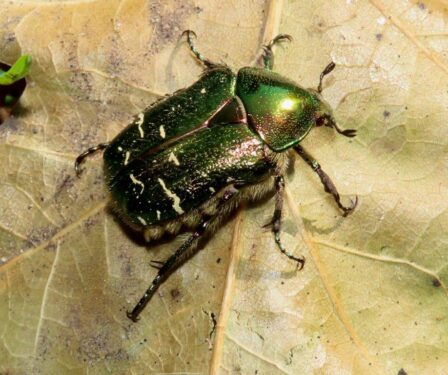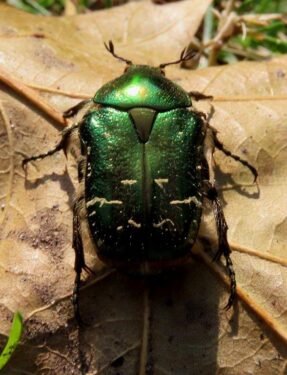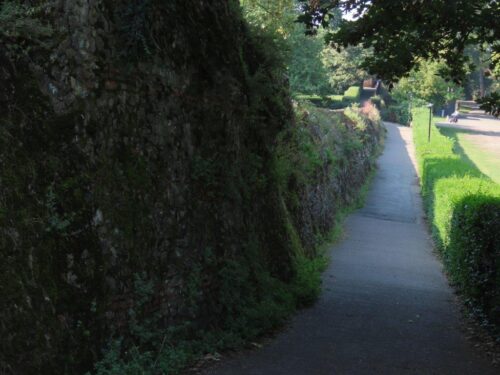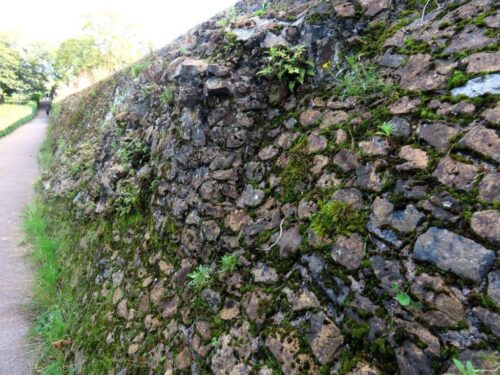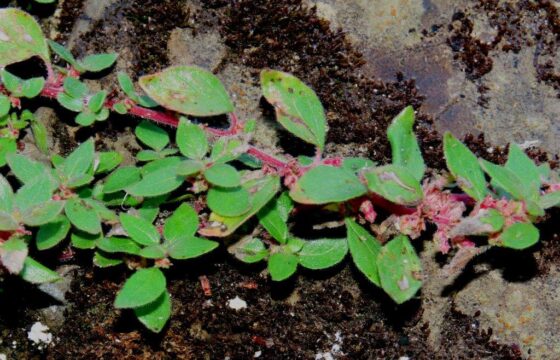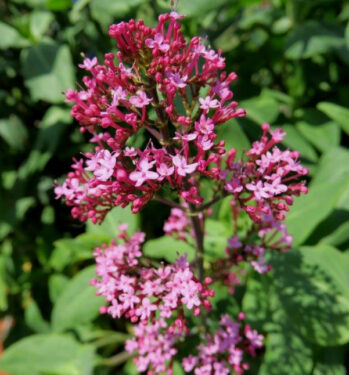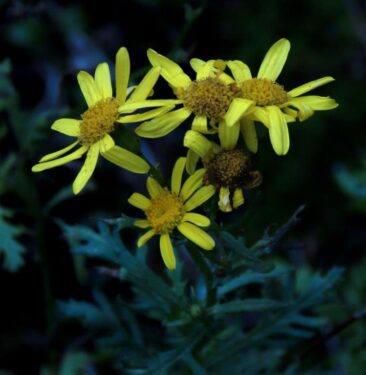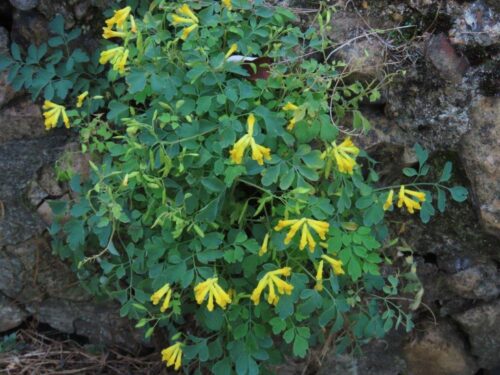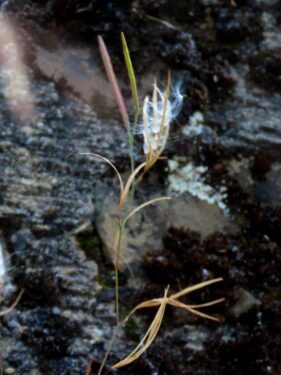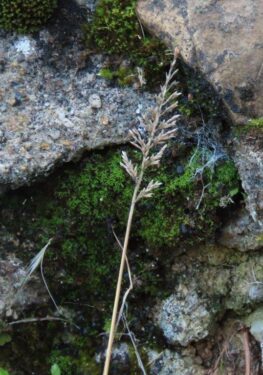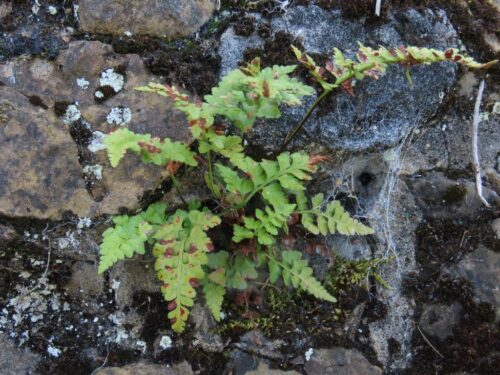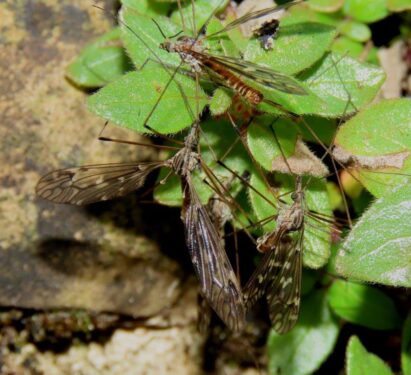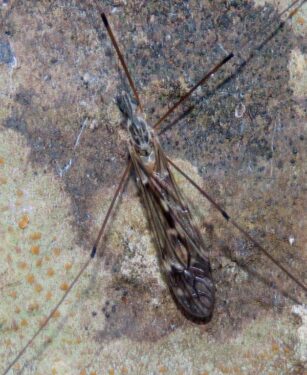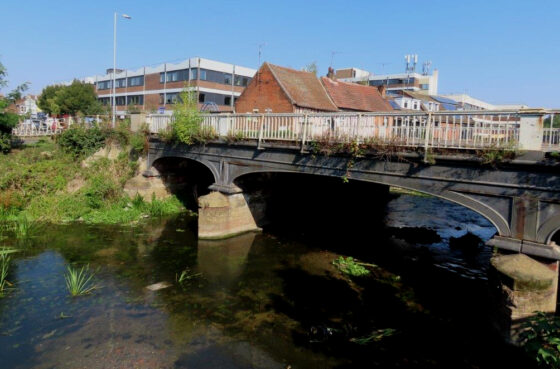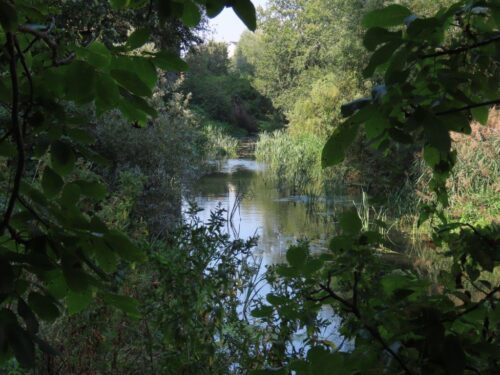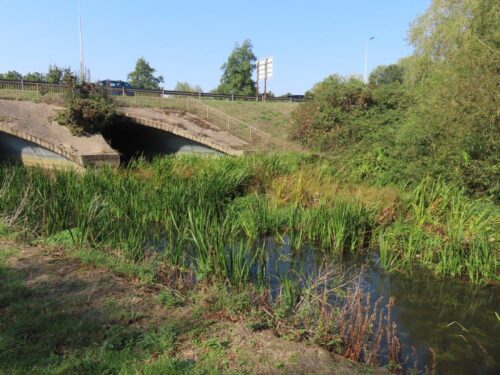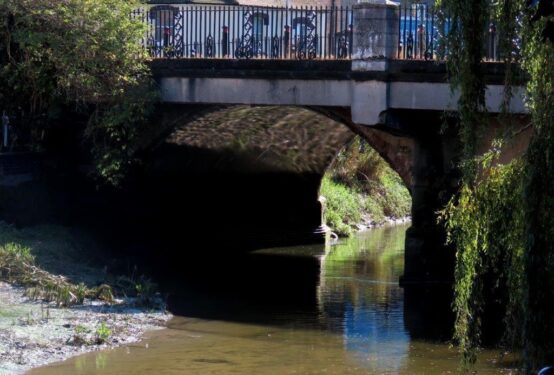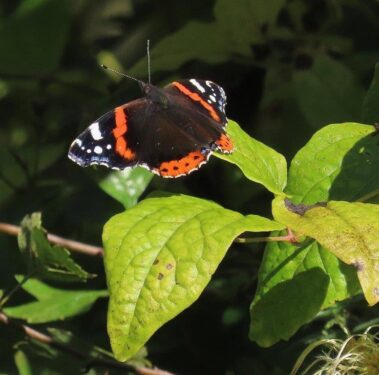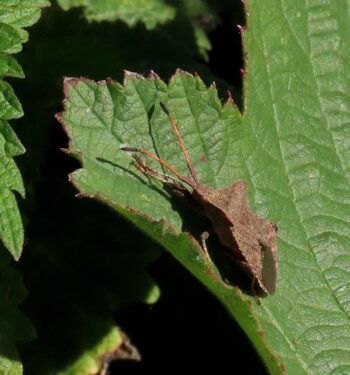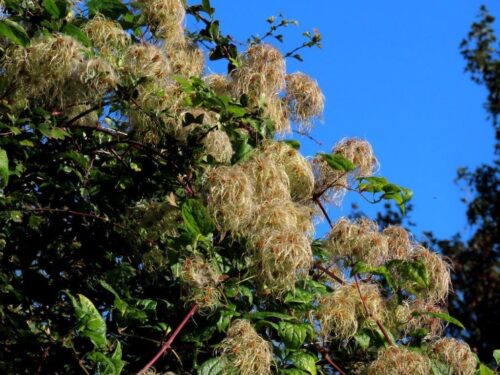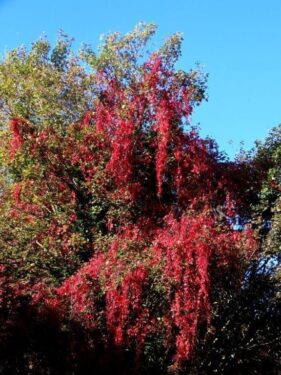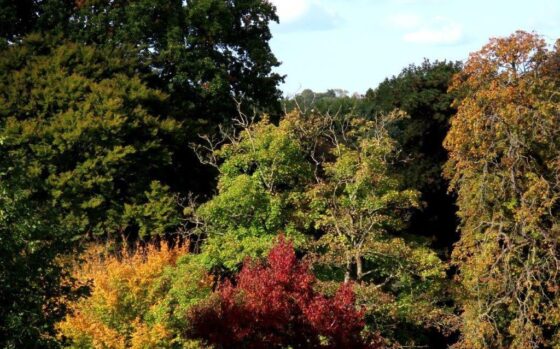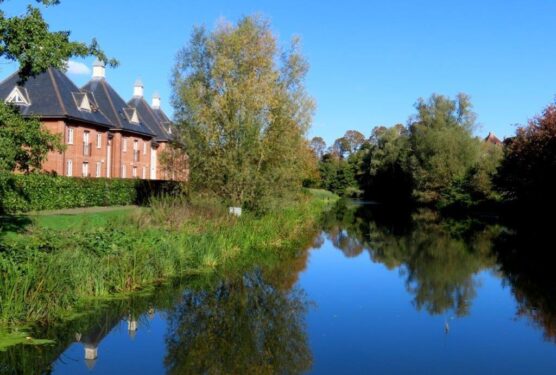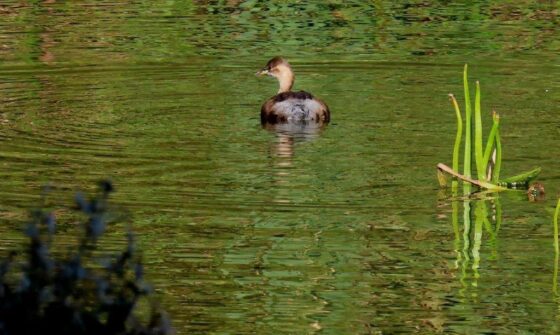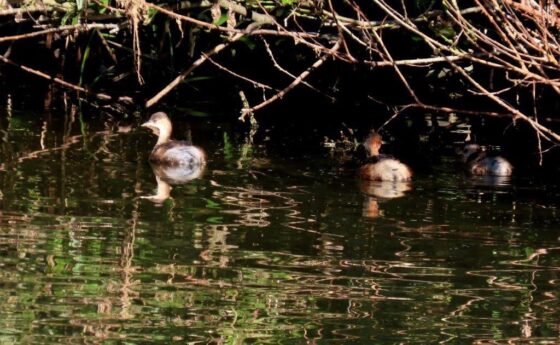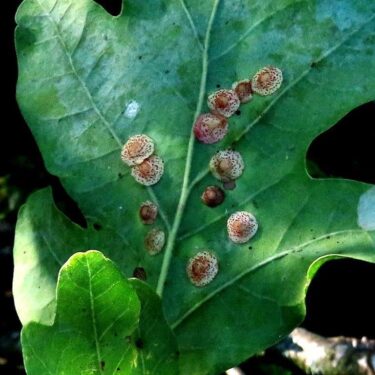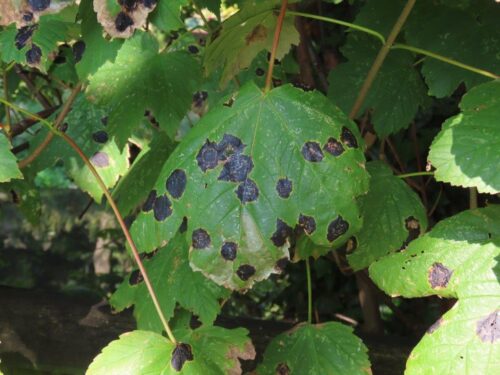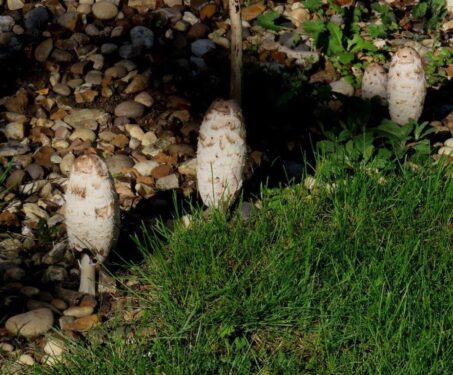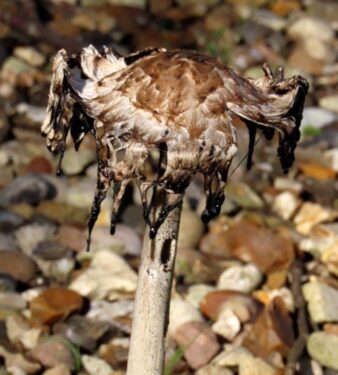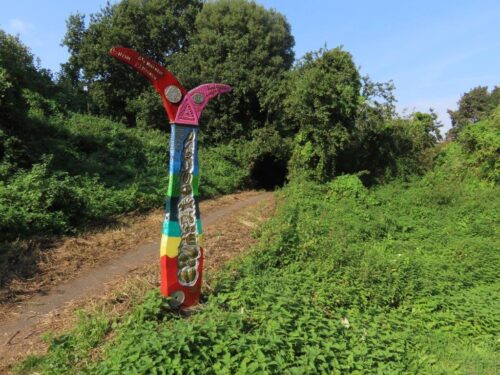The third of our recent trips to investigate potential new nature walks was much closer to home, starting just one stop down the railway line at Hythe, and walking the route of the River Colne up to Colchester main station three weeks ago.
Particularly the earlier part of the walk we knew well in the past, both having worked in Harbour House at the Hythe, but that finished 15 years ago. It always was a pleasant walk, but would the same be true now, especially given the litter-strewn route the last time we ventured there maybe five years ago?
The Colne is in two sections, tidal in the lower reaches, but above the sluice at East Mill, non-tidal and sluggish. At times of low flow, little water spills over the sluice so the section below is not only tidal but salty, as evidenced by Sea Aster and other saltmarsh plants growing along the muddy margins.
The first section of the walk was across the Moors (historic moorings, not uplands swathes of Heather!). And what a change there has been, with spontaneous woodland now springing up on this brownfield site, areas of which were a disposal site for Paxman’s factory spoil. No room now for the Wasp Spiders we knew so well, and the former swathes of interesting plants like Tree Lupin and Wormwood are much reduced, but the riverside scrub held at least three singing Cetti’s Warblers, almost unthinkable when we first knew it.
Flowering Ivy bushes sporadically along the path, as always, were a magnet for late-season insect activity, including Ivy Bees, Honeybees, bumblebees, Commas and many more.
The only areas remaining unwooded are the flood-prone sections now clothed in beds of Russian Comfrey and Stinging Nettles, botanically poor but supporting lots of insects, here Parent Bugs and a Dock Bug, and lots of spiders.
Nettle and Comfrey both love high nitrogen conditions, probably derived from flood overspill. Colchester sewage works forms one of the main tributaries of the Colne: it may be downriver but on a flood tide its effluent will be pushed upstream. And probably again and again as it takes several tides for water entrained in the upper tidal reaches to finally exit to open sea.
Another feature of the water was the slick of lurid green Least Duckweed. The source of the duckweed was obvious when on the bridge over the sluice next to East Mill … the still river upstream was chockfull after a few days without rain. There was only the merest dribble of water passing over, the duckweed discs jostling like coins in the penny-falls of an amusement arcade on Clacton Pier. But after heavy rain, the downflow of duckweed will be greater, and indeed the sluice may be lowered periodically to clear the river, as we have suspected when the green slick passes our flat.
Along the tranquil upstream stretches, Alder trees and various willows form stands along the banks, the Alder leaves bearing the tell-tale holes of the recently arrived Alder Leaf-beetle and an array of mite-induced galls. in these spots, several Grey Wagtails were feeding, and a Kingfisher sped past in a moment of brilliance.
Moving upstream away from the sluice, the water became clearer of duckweed, and revealed a number of other water plants such as Arrowhead. In such spots in the sun, Migrant Hawkers and Common Darters were feeding and breeding while Willow Emerald damselflies flittered among the branches, and a Forest Bug teetered on the brink of disaster wandering around the leaves overhanging the water.
At lower Castle Park, it was time for a diversion away from the river. No time to examine the impressive array of ornamental trees, but we had to stop and enjoy a Rose Chafer that flew in from nowhere and landed right in front of us. Colchester is a national hot-spot for this magnificent beast, but the mid-September date seemed rather late.
Running between Upper and Lower Castle parks is a superb section of the Roman city wall, constructed substantially of septaria nodules front the London Clay exposures around Harwich.
This is the site of one of my career failures. Thirty or so years ago, the wall was visited by an eminent lichenologist who rated the diversity of wall lichens he found one of the highest in Eastern England. And then another expert, this time on an even less celebrated group, lichenicolous fungi, came along and found several species new to Britain and some new to science. I pushed for the wall to be given SSSI status; English Nature’s council had other ideas. Too obscure an interest, and not wanting to get into a fight with English Heritage on whose call Colchester Borough Council was proposing clearing, cleaning all vegetation from the wall.
My intervention may have done some limited good, but walking along the north-facing wall this week it seemed rather less special for wildlife than it was previously. Having said that, still some specialist wall plants, including Pellitory-of-the-wall, Red Valerian (with its distinctive bug gall), Oxford Ragwort, Yellow Corydalis and even some local scarcities such as Wispy Willowherb, Fern Grass and Black Spleenwort.
Also on the wall were mating orgies of picture-winged cranefly Tipula confusa, for which the Essex Field Club map shows only a couple of sites in north-east Essex (Earls Colne and Walton). However maps are not always complete, and indeed a niggling memory was tracked down to a photo of one we found in Bures. And then one in the ferry port of the Isle of Coll – it would seem not to have been recorded on that island before. Always something to find, and learn, and share… a salutary lesson always to send in interesting records!
Back to the river, we continued across Middleborough and right then round to Cowdray Avenue, with a happy short detour for an excellent lunch in the Marquis pub.
So, another interesting walk for us to offer in due course. Interesting also to see parts of Colchester previously unknown to us, despite having lived and worked there. And it was also very pleasing to note the lack of litter along the route, a tribute to the efforts of Colchester City Council or volunteers or whoever does the selfless, and all-too-often thankless, task.
*************************************************************************************
Three weeks later we returned to do this as a walk with eight happy walkers, enjoying the return of blue skies and sunlight, although unfortunately the litter-free nature of our past walk wasn’t repeated. However, given that we had at least three Litter Faeries with us, our group certainly made a positive difference. Thank you for all your efforts!
There were changes over the three weeks, mostly reflecting the onset of autumn. There were fewer insects, with just a few Red Admirals and a Dock Bug, along with bumblebees feasting on the final Comfrey, Bristly Ox-tongue and Ivy flowers. But we did find a couple of (sadly) squashed Rose Chafers, further extending their flight period which even in September seemed longer than any we had experienced before.
Festoons of Traveller’s-joy were more Old Man’s Beardy while those of Virginia Creeper on the Moors had assumed the ‘traditional colors of a US fall’; in Castle Park, our trees were making their own subtle colour-shifts. Perhaps the fact that last night we almost had a frost will produce one of our periodically spectacular autumn fire-shows, which would resonate well with the second major aurora event reported around Colchester last night (not by us!)
The non-tidal section of the Colne above East Mill also looked very different, lacking the thick carpets of Least Duckweed. Occasional rather heavy rainstorms have clearly pushed the mats of duckweed discs over the precipice of the sluice into the salty tide, and so to oblivion. There was a family of Dabchicks on the upper sections, birds that will voluntarily head downstream shortly as the risk of icing on fresh waters increases.
Galls are always a feature of autumn, such as these Spangle Galls on Oak leaves, and there are then of course the fungi. Their high season is just starting, and will be a feature hopefully of the next #WildEssex walk…for today, it was Sycamore Tar-spot and a troop of Shaggy Ink-caps in all stages of development.
And so it was lunch in Castle Park followed by a welcome drink in the Marquis as a fine full stop to the event, one that may become a regular offering, suitable for any time of year.
